Ayurvedic pitta recipes are designed to balance the pitta dosha and promote overall wellness. These recipes focus on cooling and soothing ingredients that help reduce excess heat in the body. By incorporating these recipes into your diet, you can support your body’s natural balance and achieve inner harmony. Whether you’re looking for a refreshing beverage, a comforting soup, or a nourishing main dish, these recipes have got you covered.
Table of Contents
Key Takeaways:
- Ayurvedic pitta recipes use cooling and soothing ingredients to balance the pitta dosha.
- These recipes can help reduce excess heat in the body and promote overall wellness.
- Try refreshing beverages like the Cucumber Coconut Cooler or nourishing main dishes like the Sweet Potato and Cauliflower Dosas.
- Include pitta-pacifying ingredients like fennel, ginger, and butternut squash in your recipes.
- Listening to your body and adjusting the recipes to your individual needs is key in maintaining balance.
Cucumber Coconut Cooler
Looking for a refreshing and cooling beverage to beat the summer heat? Try this Cucumber Coconut Cooler, a perfect pitta pacifying recipe that combines the hydrating properties of cucumber with the cooling benefits of coconut water.
Simply mix together freshly sliced cucumbers, a splash of refreshing coconut water, and a squeeze of lime for a burst of tangy flavour. For added freshness, garnish with a few sprigs of mint. This simple yet invigorating drink can help calm the heat and irritation associated with pitta imbalance.
This Cucumber Coconut Cooler is not only delicious but also a great way to stay hydrated and maintain balance during warmer months. Enjoy it poolside, at a picnic, or any time you need a refreshing pick-me-up.
Ingredients:
- 1 cucumber, sliced
- 1 cup coconut water
- 1 lime, juiced
- Fresh mint leaves, for garnish
Instructions:
- In a pitcher, combine the sliced cucumber, coconut water, and lime juice.
- Stir well to mix the flavours.
- Chill in the refrigerator for at least 30 minutes.
- Serve over ice and garnish with fresh mint leaves.
Stay cool and refreshed with this delicious Cucumber Coconut Cooler. It’s the perfect beverage to keep you hydrated and balanced during hot summer days. Give it a try and let the cooling flavours soothe your pitta dosha.
Sweet Potato and Cauliflower Dosas
When it comes to pitta-balancing recipes, these sweet potato and cauliflower dosas are a delicious choice. Both sweet potatoes and cauliflower have cooling properties that can help balance pitta dosha, making them an ideal addition to your ayurvedic diet.
The dosa itself is made with yellow split mung beans, which are not only easy to digest but also nourishing for the body. The combination of these ingredients creates a satisfying and flavourful dish that will keep your pitta dosha in check.
Ingredients:
- 1 cup yellow split mung beans
- 1 cup sweet potatoes, grated
- 1 cup cauliflower, finely chopped
- 1 teaspoon cumin seeds
- 1 teaspoon turmeric powder
- Salt to taste
- Ghee for cooking
Instructions:
- Soak the yellow split mung beans in water for at least 4 hours. Drain and set aside.
- In a large bowl, combine the grated sweet potatoes, chopped cauliflower, soaked mung beans, cumin seeds, turmeric powder, and salt. Mix well.
- Heat a non-stick skillet or dosa pan over medium heat and grease it with ghee.
- Pour a ladleful of the dosa batter onto the centre of the skillet and spread it in a circular motion to form a thin dosa.
- Cook the dosa for 2-3 minutes or until the edges start to crisp up. Flip the dosa and cook for another 1-2 minutes.
- Repeat the process with the remaining batter.
- Serve the dosas hot with a side of cilantro sauce.
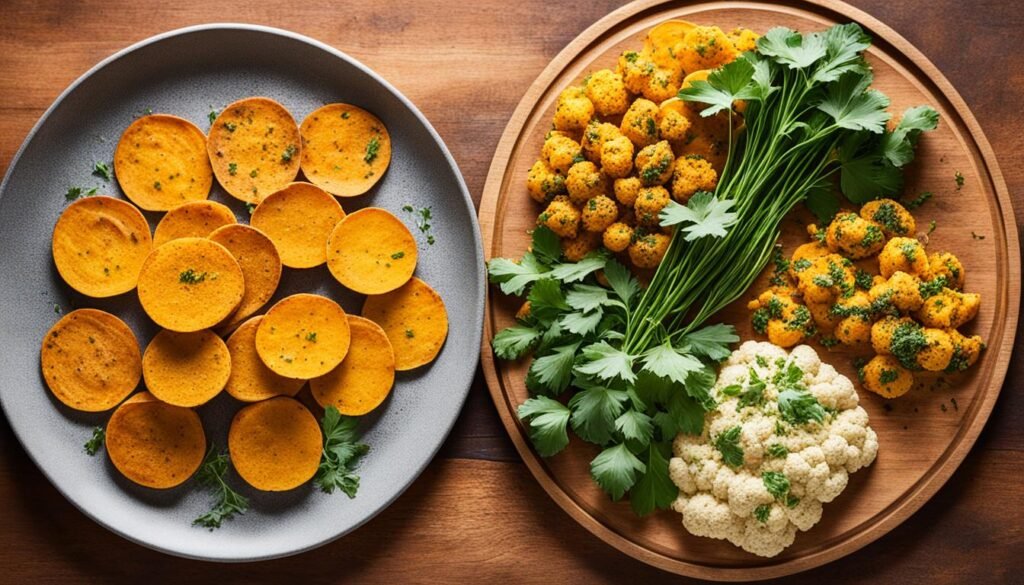
The dosas can be enjoyed as a main dish or as a snack. They are versatile and can be customized with your favourite toppings and seasonings. The combination of sweet potatoes and cauliflower not only adds a delicious flavour but also helps to cool down the excess heat associated with pitta dosha.
Note: Avoid overcooking the dosa to maintain their crispy texture and prevent them from becoming too heavy for the digestive system.
Pair these dosas with a refreshing cilantro sauce to enhance the flavours and provide an additional cooling effect. Here’s a simple recipe for the cilantro sauce:
Cilantro Sauce:
- 1 cup fresh cilantro leaves
- 1 green chili
- 2 cloves of garlic
- 1 tablespoon lemon juice
- Salt to taste
“The combination of sweet potatoes and cauliflower creates a satisfying and flavourful dish that helps keep your pitta dosha in check.”
| Dish | Ingredients | Benefits |
|---|---|---|
| Sweet Potato and Cauliflower Dosas | Yellow split mung beans, sweet potatoes, cauliflower, cumin seeds, turmeric powder, salt | – Cooling properties – Easy to digest – Nourishing for the body |
| Cilantro Sauce | Cilantro leaves, green chili, garlic, lemon juice, salt | – Enhances flavours – Provides cooling effect |
These sweet potato and cauliflower dosas are a perfect addition to any pitta dosha meal plan. They offer a balance of flavours and textures while reducing excess heat in the body. Incorporate this recipe into your ayurvedic diet and experience the benefits of pitta balancing in every bite.
Fennel Zucchini
This simple yet delicious recipe combines fennel seeds and zucchini to create a cooling and flavourful dish. Fennel seeds have a cooling effect on the body and can help soothe excess pitta. The zucchini provides a refreshing crunch and pairs perfectly with the fennel flavour. This dish is light, easy to digest, and perfect for pitta-balancing meals.
Give this Fennel Zucchini recipe a try to balance your pitta dosha and enjoy a flavourful, cooling meal.
Ingredients:
- 2 medium zucchini, sliced
- 1 teaspoon fennel seeds
- 1 tablespoon olive oil
- Salt to taste
- Fresh cilantro, for garnish (optional)
Instructions:
- Heat olive oil in a skillet over medium heat.
- Add fennel seeds and cook until fragrant, about 1 minute.
- Add sliced zucchini and cook until tender-crisp, about 5 minutes.
- Season with salt to taste.
- Remove from heat and garnish with fresh cilantro, if desired.
Enjoy this Fennel Zucchini dish as a side or main course to help reduce excess pitta and bring balance to your dosha.
Bitter-Sweet Pitta Pacifying Salad
Ayurvedic Pitta Recipes, Pitta Pacifying Recipes, Pitta Reducing Meal Plans
This salad combines bitter and sweet flavours to help balance pitta. Bitter vegetables like bitter melon and Brussels sprouts are known for their cooling properties, while sweet fruits like pomegranates and raisins add a touch of sweetness. The salad is dressed with coconut milk, pepper, ginger, basil, and salt, creating a refreshing and nourishing dish.
For a visually appealing presentation of the salad, arrange the ingredients in a beautiful dish with the contrasting colours of the bitter vegetables and sweet fruits. The creamy coconut milk dressing adds a luscious touch and complements the flavours perfectly.
“The combination of bitter and sweet flavours in this salad not only helps balance pitta but also delights the taste buds. The cooling properties of bitter vegetables and the natural sweetness of fruits create a harmonious blend of tastes.” – Ayurvedic Expert
Ingredients:
- Bitter melon
- Brussels sprouts
- Pomegranate seeds
- Raisins
- Coconut milk
- Pepper
- Ginger
- Basil
- Salt
Instructions:
- Chop bitter melon and Brussels sprouts into bite-sized pieces.
- In a bowl, combine bitter melon, Brussels sprouts, pomegranate seeds, and raisins.
- In a separate bowl, mix coconut milk, pepper, ginger, basil, and salt to create the dressing.
- Pour the dressing over the salad and toss gently to coat the ingredients.
- Serve the salad chilled and enjoy!
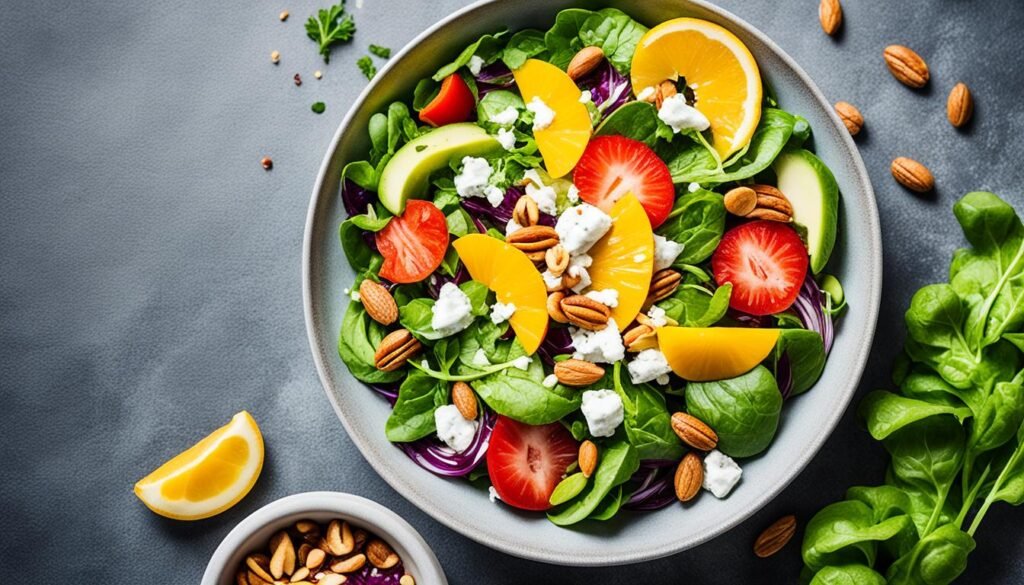
This refreshing salad not only satisfies your taste buds but also provides a wealth of pitta-balancing benefits. With the combination of bitter and sweet flavours, this salad is a delightful addition to your Pitta Pacifying Recipes collection.
Green Beans with Turmeric and Ginger
One delicious and cooling Ayurvedic pitta recipe is green beans cooked with turmeric and ginger. Both turmeric and ginger have anti-inflammatory properties that can help cool down excess pitta and reduce inflammation in the body. This dish is not only flavourful but also soothing for the body, making it a perfect addition to a pitta pacifying diet.
Green beans are a nutritious vegetable that provides a good amount of fibre, vitamins, and minerals. When combined with the powerful spices like turmeric and ginger, this dish becomes a powerhouse of health benefits. Turmeric is known for its anti-inflammatory and antioxidant properties, while ginger aids digestion and helps reduce inflammation in the body.
Here’s a simple recipe to make green beans with turmeric and ginger:
- Ingredients:
- 1 pound of green beans, trimmed
- 1 tablespoon of coconut oil
- 1 teaspoon of turmeric powder
- 1 teaspoon of grated ginger
- Salt to taste
Instructions:
- 1. Heat coconut oil in a pan over medium heat.
- 2. Add turmeric powder and grated ginger to the pan and sauté for a minute.
- 3. Add the green beans to the pan and stir well to coat them with the turmeric-ginger mixture.
- 4. Cook the green beans for about 5-7 minutes, until they are tender but still crisp.
- 5. Season with salt to taste and serve hot.
This dish is not only delicious but also visually appealing. The vibrant green colour of the beans combined with the golden hues of turmeric creates an appetizing and inviting plate. You can enjoy this dish as a side with your main course or as a light meal on its own.
Adding this recipe to your collection of pitta pacifying recipes is a great way to support your body’s balance and keep pitta dosha in check. The cooling properties of green beans, turmeric, and ginger work together to help reduce excess heat in the body and promote overall wellbeing.
“The combination of green beans, turmeric, and ginger in this dish creates a refreshing and soothing experience for the body. The flavours blend perfectly to provide a cooling effect, making it an ideal choice for those with pitta imbalances.” – Ayurvedic Wellness Expert
By incorporating Ayurvedic pitta recipes like these into your diet, you can nourish your body with cooling and soothing ingredients that promote balance and wellness. Try this flavourful and nutritious recipe today and experience the benefits of Ayurveda first hand.
Milk and Rice Kheer (Broken Rice Pudding)
Indulge in the comforting flavours of this classic Indian dessert, Milk and Rice Kheer. Made with broken rice and milk, this velvety pudding is a treat for the senses. The addition of cashews and raisins adds a touch of sweetness and texture to every spoonful. Not only is this dessert delicious, but it also has cooling properties that can help balance pitta dosha, making it a perfect choice for those looking for Ayurvedic pitta recipes.

With its creamy consistency and delicate flavours, Milk and Rice Kheer is a dessert that can be enjoyed on any occasion. Whether you’re hosting a gathering or simply craving something sweet, this dessert is sure to satisfy your taste buds. Its cooling nature and use of nourishing ingredients make it an ideal choice for individuals seeking pitta dosha meal ideas.
Experience a moment of pure comfort and indulgence with each spoonful of this delightful dessert. The combination of broken rice, milk, cashews, and raisins creates a symphony of flavours that is both soothing and satisfying. Treat yourself to a taste of Ayurvedic wisdom and let Milk and Rice Kheer nourish and balance your body, mind, and spirit.
Khichdi (Rice and Lentils Mix)
Khichdi is a traditional Indian dish made with rice and lentils, known for its nourishing and easy-to-digest properties. This pitta-balancing recipe is a staple in Ayurvedic cuisine, offering a comforting and wholesome option for those seeking a balanced diet. Khichdi is especially beneficial for individuals suffering from fevers or stomach ailments, as it is gentle on the digestive system.
Enjoyed with a dollop of ghee or butter, Khichdi provides a complete protein source and is packed with essential nutrients. The combination of rice and lentils creates a well-rounded meal that promotes satiety and sustenance. The soft texture and mild flavours make it suitable for all ages and tastes.
Make your Khichdi more flavourful by adding aromatic spices such as cumin seeds, turmeric, and ginger. These spices not only enhance the taste but also possess anti-inflammatory properties, helping to calm pitta dosha and reduce excess heat in the body.
Indulge in this comforting and versatile dish as part of your pitta dosha diet. Whether enjoyed as a main course or side dish, Khichdi provides a nourishing and balanced meal option that can be customized to suit your preferences.
Here is a simple recipe for Khichdi:
- Combine equal parts of rice and lentils in a pot.
- Add water in a 2:1 ratio (2 parts water to 1 part rice and lentils).
- Optional: Add cumin seeds, turmeric, ginger, salt, and any other preferred spices.
- Cook on low heat, covered, until the rice and lentils are soft and fully cooked.
- Garnish with cilantro and serve hot with a spoonful of ghee or butter.
Enjoy the nourishing benefits of Khichdi as you balance your pitta dosha and support your overall well-being.
Frothy Almond Date Shake
Indulge in the creamy goodness of the Frothy Almond Date Shake, a delicious and nourishing beverage that is perfect for pacifying pitta dosha. This Ayurvedic pitta recipe combines the natural sweetness of dates with the nourishing properties of almonds, creating a harmonizing blend of flavours.
The Frothy Almond Date Shake also features aromatic spices like ginger and cinnamon, which add a touch of spice and warmth to the drink. These spices not only enhance the taste but also provide additional health benefits. Ginger aids digestion while cinnamon is known for its anti-inflammatory properties.
By sipping on this shake, you can effectively cool and balance the pitta dosha, reducing excess heat and promoting a sense of calm and harmony within the body. The soothing and nourishing properties of the ingredients make it an ideal addition to your Ayurvedic pitta-dosha diet.
Benefits of the Frothy Almond Date Shake:
- Provides nourishment and promotes overall wellness
- Pacifies pitta dosha and reduces excess heat
- Enhances digestion and helps soothe any digestive issues
- Contains natural sweetness without added sugars
Indulge in this delightful shake as a healthy snack or as a refreshing drink during warm weather. It’s a simple and easy-to-make recipe that will leave you feeling satisfied and balanced.
Try the Frothy Almond Date Shake today and experience the cooling and nourishing benefits for yourself!
| Ingredients: | Instructions: |
|---|---|
| 1 cup almond milk4-5 dates, pitted1/4 cup almonds, soaked overnight1/2 teaspoon ginger powder1/2 teaspoon cinnamon powder Ice cubes (optional) | In a blender, combine the almond milk, pitted dates, soaked almonds, ginger powder, and cinnamon powder. Blend on high speed until the mixture becomes smooth and creamy. If desired, add ice cubes to the blender and blend again until the shake becomes frothy. Pour the shake into a glass and serve chilled. |
Butternut Squash Soup with Garlic, Fennel, and Ginger
Another delightful Ayurvedic pitta recipe to add to your collection is the Butternut Squash Soup with Garlic, Fennel, and Ginger. This cosy soup combines the flavours of butternut squash, garlic, fennel, and ginger to create a comforting and nourishing dish. Butternut squash is known for its sweet and cooling properties, making it the perfect ingredient to balance pitta dosha.
The addition of garlic, fennel, and ginger not only enhances the flavour but also provides additional health benefits. Garlic helps to reduce inflammation in the body, while fennel and ginger support digestion and aid in the elimination of toxins.
This soup is not only delicious but also ideal for the autumn season when the weather starts to cool down. As the temperature drops, it becomes important to focus on recipes that can help balance pitta and provide warmth and comfort. The Butternut Squash Soup with Garlic, Fennel, and Ginger does exactly that, offering a soothing and nourishing meal that promotes overall wellness.
Whether you’re looking for a delicious appetizer or a satisfying main course, this soup is a perfect choice. It can be enjoyed on its own or paired with a side of whole grain bread or a refreshing salad. The natural sweetness of the butternut squash combined with the flavourful spices creates a harmonious blend of flavours that will delight your taste buds and support your pitta dosha balance.
“The Butternut Squash Soup with Garlic, Fennel, and Ginger is a perfect example of how Ayurvedic pitta recipes can be both delicious and beneficial for overall wellness.” – Ayurvedic Chef
To make this soup, gather the following ingredients:
- 1 medium butternut squash, peeled and cubed
- 4 cloves of garlic, minced
- 1 fennel bulb, chopped
- 1-inch piece of ginger, grated
- 4 cups vegetable broth
- 1 tablespoon olive oil
- Salt and pepper to taste
Here’s how to prepare the Butternut Squash Soup with Garlic, Fennel, and Ginger:
- In a large pot, heat the olive oil over medium heat.
- Add the minced garlic, chopped fennel, and grated ginger to the pot. Sauté for a few minutes until fragrant.
- Add the cubed butternut squash and vegetable broth to the pot. Bring to a boil, then reduce heat and simmer for about 20 minutes or until the squash is tender.
- Use an immersion blender or transfer the soup to a blender to blend until smooth and creamy.
- Season with salt and pepper to taste.
- Serve hot and enjoy!
With its rich flavours and balancing properties, the Butternut Squash Soup with Garlic, Fennel, and Ginger is a must-try recipe for anyone seeking to balance pitta dosha and promote overall wellness. Incorporate this soup into your pitta reducing meal plans and experience the delicious benefits of Ayurvedic cooking.
Potato Latkes with Scallions
These crispy potato latkes are a comforting and hearty treat, perfect for cold winter days. The addition of scallions adds a fresh and green flavour, making this dish even more delightful. Latkes are traditionally enjoyed during Hanukkah, but they can be enjoyed any time as part of a pitta-balancing diet.
Latkes are a popular dish in Jewish cuisine, particularly during Hanukkah, the Festival of Lights. These savoury pancakes are typically made from grated potatoes, onions, eggs, and flour. They are then pan-fried to a golden crispiness, creating a mouth watering texture that complements the soft and flavourful interior.
By incorporating scallions into the traditional latke recipe, you can add a burst of freshness and green flavour to the dish. Scallions, also known as green onions, have a mild taste that perfectly complements the earthiness of the potatoes.
Here’s a simple recipe to make your own pitta-balancing potato latkes with scallions:
- Ingredients:
| Quantity | Ingredients |
|---|---|
| 2 lbs | Potatoes, peeled and grated |
| 1 | Large onion, grated |
| 2 | Eggs, beaten |
| 3 tbsp | All-purpose flour |
| 2 tsp | Salt |
| 1/2 tsp | Black pepper |
| 4 | Scallions, finely chopped |
| Vegetable oil | For frying |
- Instructions:
- In a large bowl, combine the grated potatoes, grated onion, beaten eggs, all-purpose flour, salt, black pepper, and finely chopped scallions. Mix well until all the ingredients are evenly combined.
- In a large skillet, heat vegetable oil over medium-high heat.
- Take a spoonful of the potato mixture and carefully place it in the hot oil, shaping it into a flattened pancake shape. Repeat until the skillet is full but not overcrowded.
- Cook the latkes for 3-4 minutes on each side, or until they turn golden brown and crispy.
- Remove the cooked latkes from the skillet and place them on a paper towel-lined plate to absorb any excess oil.
- Repeat steps 3-5 until all the potato mixture is used.
- Serve the potato latkes hot, accompanied by traditional toppings like applesauce or sour cream.
These potato latkes with scallions are a delightful addition to an Ayurvedic pitta-balancing diet. The cooling properties of the scallions and the earthiness of the potatoes contribute to a balanced and nourishing meal.
So why not treat yourself to a batch of homemade potato latkes with scallions? Whether you’re celebrating Hanukkah or simply looking for a delicious and comforting dish, these pitta-balancing latkes are sure to satisfy your taste buds and nourish your body.
Conclusion
Balancing pitta dosha is essential for overall wellness and inner harmony. Incorporating these Ayurvedic pitta recipes into your diet can support your body’s natural balance and alleviate symptoms of pitta imbalance such as irritation, agitation, and digestive issues.
When following an Ayurvedic pitta-pacifying diet, it is important to listen to your body and adjust the recipes according to your individual needs. Each person’s constitution is unique, and what works for one may not work for another. Pay attention to how your body responds to the different ingredients and make modifications accordingly.
Discover the delicious flavours and cooling properties of these recipes as you nourish and balance your pitta dosha. By incorporating pitta-balancing recipes into your daily routine, you can achieve a state of harmony and well-being. Embrace the benefits of Ayurveda and enjoy the journey to a healthier, more balanced you.
FAQ
What is the purpose of Ayurvedic pitta recipes?
Ayurvedic pitta recipes are designed to balance the pitta dosha and promote overall wellness.
What ingredients are used in pitta pacifying recipes?
Pitta pacifying recipes focus on cooling and soothing ingredients that help reduce excess heat in the body.
How can Ayurvedic pitta recipes benefit my body?
By incorporating these recipes into your diet, you can support your body’s natural balance and achieve inner harmony.
Can you provide examples of pitta balancing recipes?
Examples of pitta balancing recipes include cucumber coconut cooler, sweet potato and cauliflower dosas, fennel zucchini, and bitter-sweet pitta pacifying salad.
Are there any main dishes suitable for pitta dosha?
Yes, green beans with turmeric and ginger and khichdi (rice and lentils mix) are two main dishes commonly enjoyed by those with pitta dosha.
What are some dessert options for pitta dosha?
Milk and rice kheer (broken rice pudding) and frothy almond date shake are popular desserts that can help balance pitta dosha.
How can these recipes support digestion?
Ayurvedic pitta recipes are typically easy to digest, which can aid in the overall digestive process.
Can pitta pacifying recipes be enjoyed year-round?
Absolutely! While some recipes may be more suitable for certain seasons, these recipes can be enjoyed at any time to help balance pitta dosha.
Are these recipes suitable for individuals with pitta imbalances?
Yes, these recipes are specifically designed to help reduce symptoms of pitta imbalances such as irritation, agitation, and digestive issues.
How do I adjust these recipes based on my individual needs?
It’s important to listen to your body and make adjustments based on your unique preferences and dietary requirements. Feel free to modify the recipes to suit your specific needs.


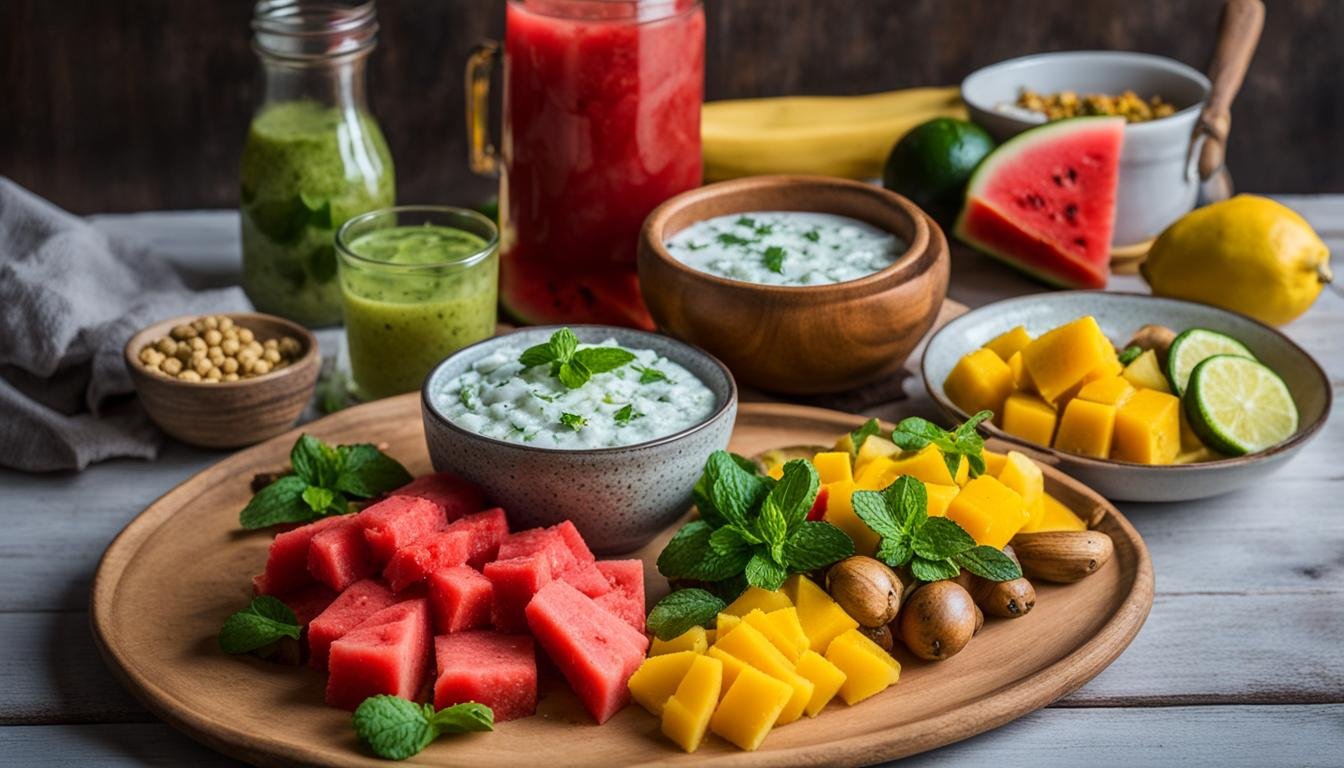

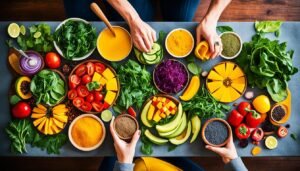
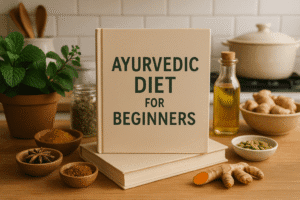
Pingback: Soothing Ayurvedic Kapha Recipes For Balance
Pingback: Nourishing Ayurvedic Soup Recipes For Wellness
Pingback: Ayurvedic Diet Benefits For Holistic Health